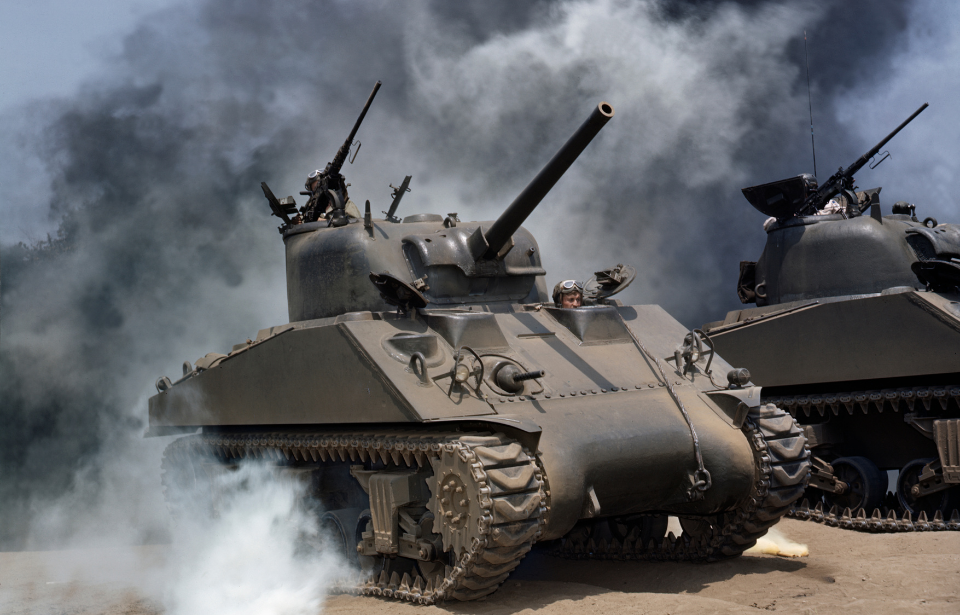The Sherman tank is one of the most well-known tanks involved in WWII, alongside the German Tiger and Soviet T-34. In the decades after the war, the reputation of the Sherman decreased to the point where many regarded it as the worst tank of the war. We will take an in-depth look into whether or not the Sherman is deserving of this reputation, and some of the reasons why it could easily be argued as being the best tank design of WWII.
The Sherman and its terrible reputation
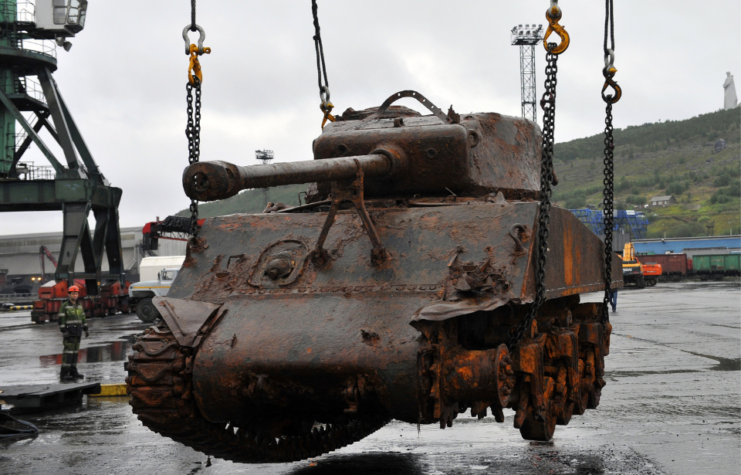
The basic running gear, drivetrain, and lower hull of the Sherman dated back to the 1930s and were designed with a huge emphasis on reliability and commonality of parts to make maintenance easier.
Many complaints about the tank come from its gas engines, the fuel for which would easily ignite when the tank was hit. The vehicle was originally designed for the 400 horsepower air-cooled Continental R975 radial engine. It had a good power-to-weight ratio but was very tall, resulting in the Sherman being almost as tall as the Tiger, even though it weighed 25 tons less. This height made the Sherman an easy target, especially from the side.
The armor is another area of debate, as it was only 50 mm on the front of the hull, and 38 mm on the sides and rear. The turret faired a little better with 76 mm over the front and 50 mm over the sides and rear.
With the right ammunition, the Tiger, Panther, and King Tiger could all penetrate the Sherman from well over 3,000 meters away, a simply unfair advantage.
A penetrating hit to the earlier models would almost certainly set the tank ablaze too, due to the storage of the ammunition. In fact, studies conducted during the war found 55–80 percent of Shermans burned after being hit.
The ammunition it did store was relatively useless against later German tanks. The 75 mm M3 gun firing the M61 APCBC round could penetrate 88 mm of armor at 100 meters. The Tiger 1 had 100 mm of armor over the front.
For these reasons, it’s clear to see in a direct one-on-one engagement the Sherman had almost no chance of success against the heavier German tanks. A German tank could sit 3,000 meters away, fire a round, penetrate the Sherman, and set it ablaze, right? Absolutely. Does this make the Sherman an inferior tank? Not quite.
Why was the Sherman like this?
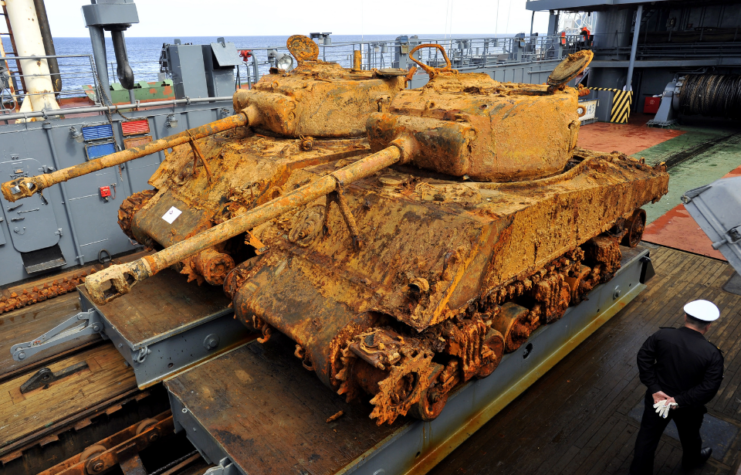
Many of the arguments highlighting the Sherman’s shortcomings rely on heavier and newer German tanks. However, to fully understand the Sherman, one needs to understand the challenges facing Allied militaries at the time.
Any tank produced in the U.S. that was destined for Europe had to be shipped over the Atlantic. To increase the number of vehicles per shipment, engineers had to strike a perfect balance between weight and performance.
Germany did not face such weight limits, as they transported their vehicles across the continent by rail. From the get-go, the Sherman was limited in many ways.
Despite this, it still managed to be packed full of great qualities.
The Sherman’s excellent qualities: Firepower
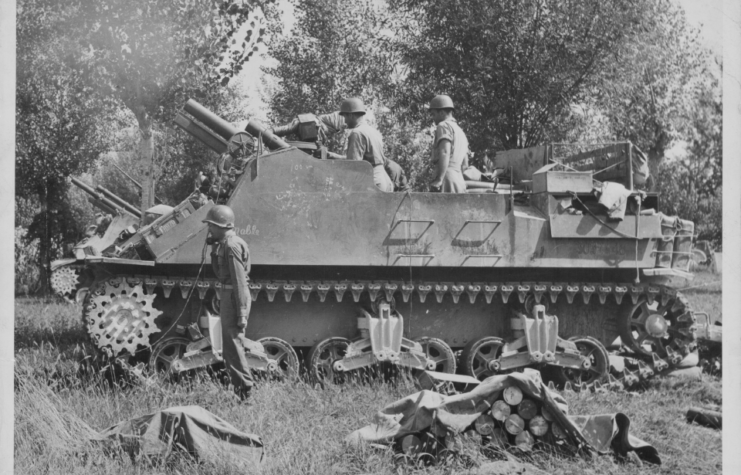
At the time of its design, the heaviest German tank was the Panzer IV. The Panzer IV was a superb tank in its own right, which many argue should have been prioritized over the nation’s bigger tanks.
Until 1942, the maximum amount of armor found on a Panzer IV was 50 mm, which was mounted flat on the front of the hull. The turret front was even worse, with just 30 mm of armor. A Sherman with the smaller 75 mm gun could punch through this armor from over 2,500 meters away, while the Panzer IV’s short-barrelled 75 mm gun would simply tickle the Sherman’s frontal armor, even at point-blank range.
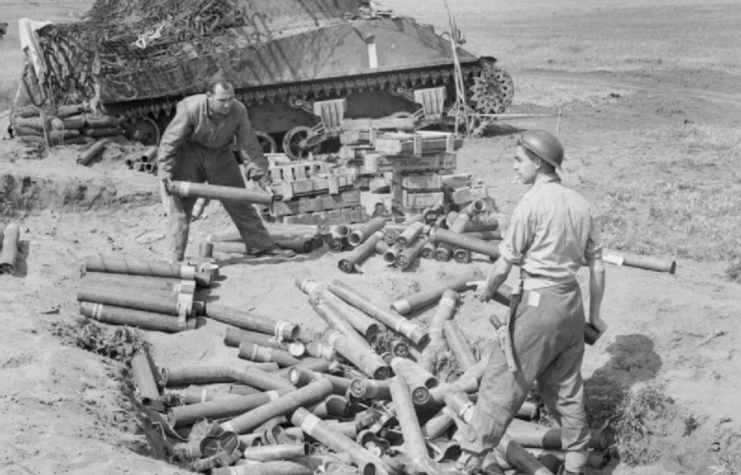
For dealing with thicker armor, the British adapted Sherman to carry a 17-pdr gun with the Sherman Firefly, which was extremely powerful. The U.S. later followed suit with the 76 mm M1 gun
Armor
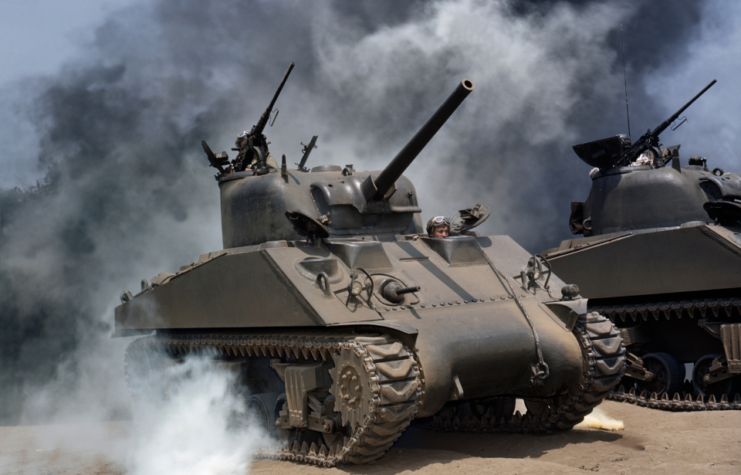
On paper, the Sherman’s armor seems unimpressive, with exactly half the frontal armor as the Tiger I, but in reality, the Sherman was one of the most well-protected medium tanks of the war. Its 50 mm of frontal hull armor was angled at 56 degrees, which gave it an effective thickness of 90 mm, an amount almost equal to the front of the Tiger I. A German study concluded that even the Tiger I’s infamous 88 mm gun would not be able to penetrate the front of a Sherman if it was angled away by 30 degrees.
The Sherman’s side armor was only 38 mm and not angled at all. In comparison, the Panther’s side armor was only 2 mm thicker, albeit set at a 30-degree angle. However, even with this angle, it could be penetrated by the Sherman’s 75 mm M3 from well over 2,000 meters away.
This level of armor protection on a 35-ton tank was virtually unheard of at the time.
The later, longer-barrelled 88 mm KwK 43 L/71 used on vehicles like the Tiger II and Jagdpanther would have made mincemeat of the Sherman at any combat range, but even the heaviest Soviet vehicles fielded during the war were not immune to this devastating gun.
Fire risks
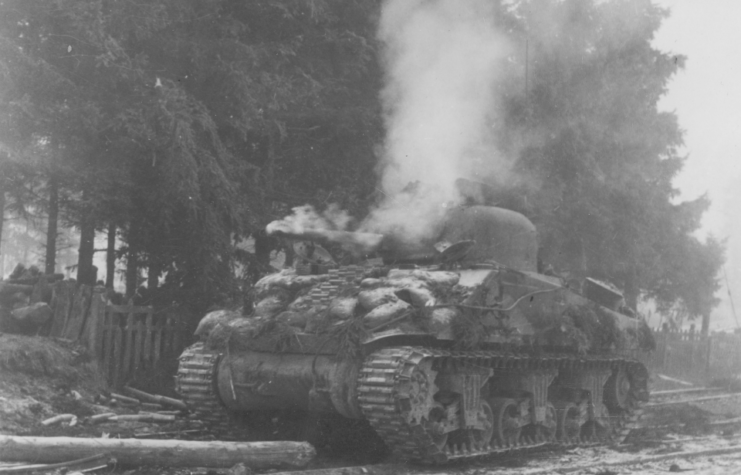
The main complaint about the Sherman was its notorious habit of burning when hit; however, this is unfair. The main reason for the Sherman’s volatility was because of its ammunition storage. Ammunition was stored in the turret, hull sides, and hull floor, which meant a hit in the side (where hits were most likely to come from), would almost certainly hit ammunition. Likewise, the petrol would easily ignite when exposed to flames.
The problem with this argument is almost all comparable tanks; the T-34, Panzer IV, Tiger, and Panther, stored their ammunition in these locations too, and all of those except the T-34 also used petrol engines. This means the Sherman was not alone in its combustibility. According to an Allied study, the Panzer IV actually caught fire more often than the Sherman.
Burning was not a localized issue to the Sherman, but was observed with most tanks from the era.

But the U.S. actually tried to correct this, by first adding applique armor over vulnerable areas, and later adding wet ammunition racks. Wet ammunition racks surrounded the shells with liquid which would immediately extinguish any fires. This made an enormous difference to the burn rates of Shermans, with only 10–15 percent burning after a hit, ironically making it one of the least flammable tanks of the war.
Large spring-loaded hatches and a floor hatch made for a quick escape out of the vehicle should it catch fire.
Tanks with wet ammunition storage can be identified by a “W” by its designation, for example, M4A1(76)W.
In addition to this, the belief that the Sherman was nicknamed the “Ronson,” because of their “Lights first time, every time” slogan is likely a myth. This exact slogan only appeared on Ronson adverts in the 1950s. There is a Ronson advert from 1927 that contains the slogan “Lights every time,” but servicemembers linking the Sherman to a slogan used 15 years prior to the tanks adoption seems unlikely.
Adaptability
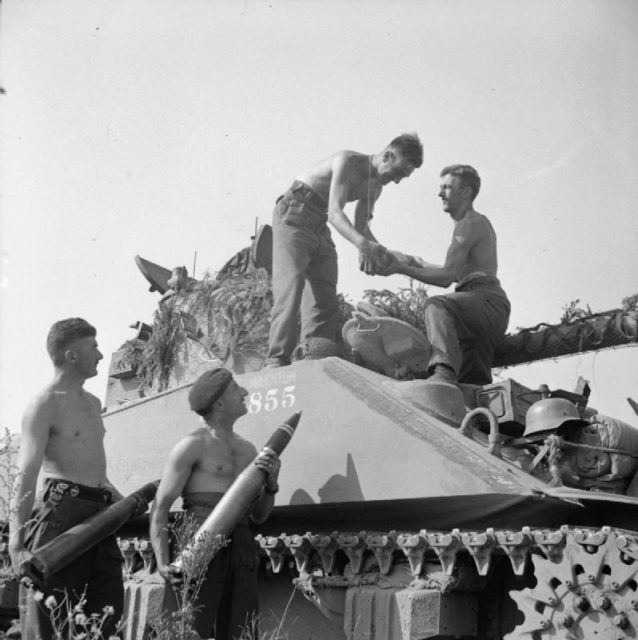
The Sherman’s design lent itself well for future upgrades.
The tank had a very large turret ring for its size (larger than the Panther’s), which allowed it to easily accept future gun upgrades and improved crew comfort. The tank’s tall height translated to more room for the crew inside too, who could operate much more effectively than in foreign designs. It also allowed for a wide range of engines, which eliminated the problem of engine shortages holding up production.
Later upgrades increased the tank’s combat capabilities, with the up-armored M4A3E2 “Jumbo” Sherman, and the up-gunned British Firefly.
Logistics
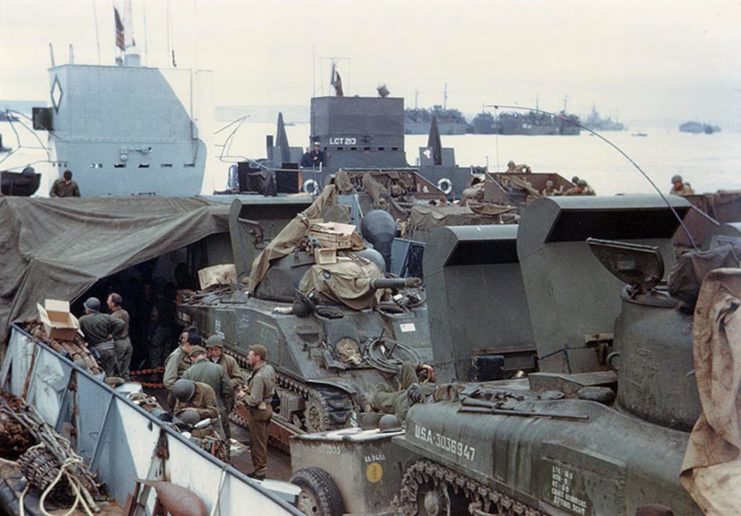
The main arguments addressed so far have been the most commonly mentioned attributes of the Sherman that many regard as severe drawbacks on the battlefield, but the Sherman is even more impressive when you consider its logistical advantages.
The Sherman was designed from the beginning to be easy to build, repair and maintain. They used interchangeable parts, so a suspension bogie could simply be unbolted from one tank and bolted onto another. Similarly, the front-mounted transmission and its housing could be completely unbolted and removed. This placement also gave the crew more protection.
The Sherman was so easy to produce, that the U.S. made 50,000 of them during the war. The Soviets produced many more T-34s, but the quality of these vehicles was often so poor that rainwater would seep through the welds, and they would be built to wildly different specifications by different factories, limiting the interchangeability of parts.
The Germans simply could not keep up with the production of Allied vehicles, with just under 1,400 Tigers and 490 Tigers IIs being produced during the war. As a result, tank-on-tank engagements with these vehicles were exceptionally rare. Because of this, many crews actually preferred the 75 mm gun over the more powerful 76 mm gun as it fired a much better high explosive round that was used against the more numerous soft-skinned vehicles and troops.
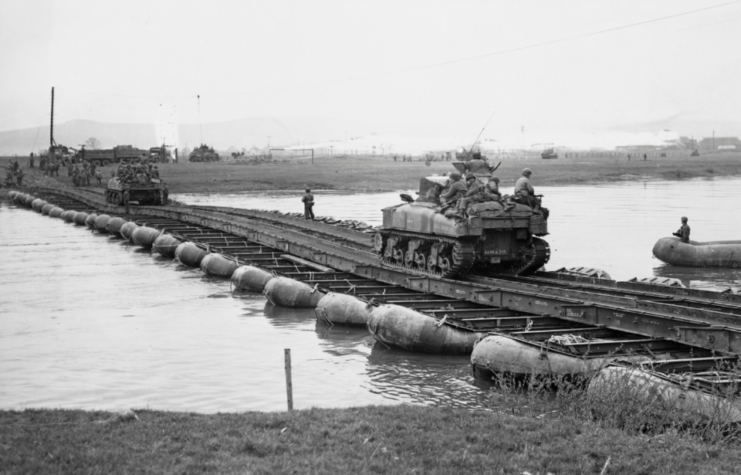
Its weight of around 35 tons allowed it to cross smaller European bridges than heavy German tanks, and it made recovering a knocked-out tank much easier.
Conclusion
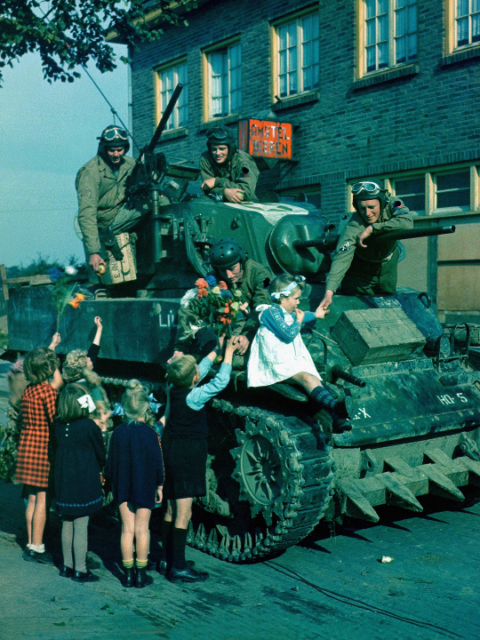
So, was the Sherman the best tank of the war? It depends on the metric you are using.
If you are basing the best tank on the most powerful gun, for example, then the Jagdtiger would be the winner. But the Jagdtiger is a design that is considered today as a failure. This highlights why choosing one attribute is a poor method of identifying the best tank of the war.
More from us: The Highs And Lows Of The Czech Panzer 38(t)
From an unbiased perspective, the Sherman is an exceptional all-rounder that was still able to compete with much newer and more advanced vehicles later in the war, thanks to its adaptability. Its simple maintenance kept them running, and its ease of production kept new ones arriving. Its gun was perfectly adequate against most of the targets it faced, and up-gunned versions were able to deal with almost anything else. Crews operated in relative comfort, and in the event that it was hit, later models were some of the safest vehicles to be in and escape from.
For these reasons, the Sherman deserves a better reputation at the very least, and a solid case can be made for it as the best tank of WWII.
